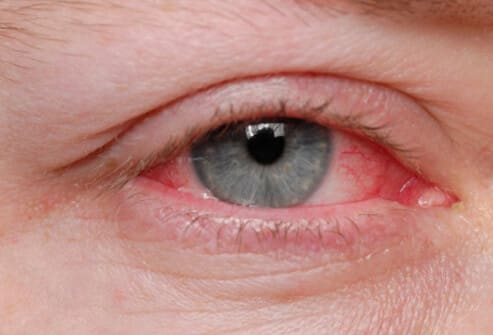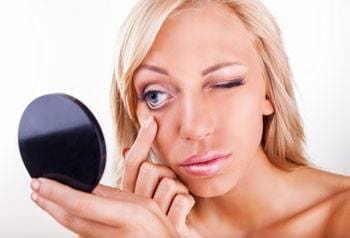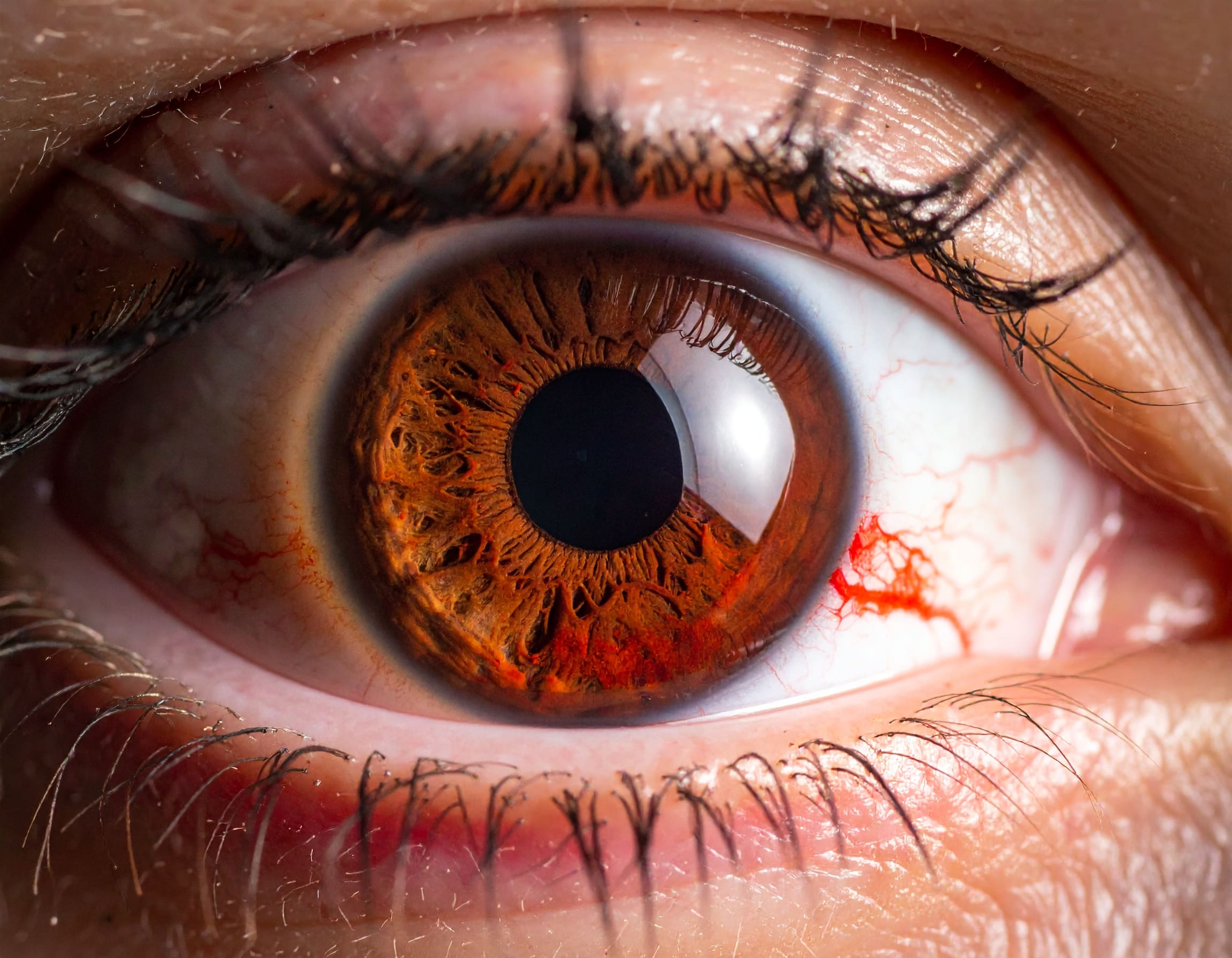You might be surprised to know that the “red eye remover” type of eye drops may actually worsen your red eye symptoms. Learn more
Red eye can occur in one or both eyes, and it can be associated with several symptoms, including:
- Irritation
- Burning
- Itching
- Dryness
- Pain
- Discharge
- Watery eyes
- Light sensitivity
- Blurry vision
In some cases, bloodshot eyes may have no symptoms other than redness.
Red or bloodshot eyes are very common and have many causes. Red eye usually is a symptom of other eye conditions that can range from benign to serious.
What causes red eyes?
The appearance of red eyes is caused by dilation of tiny blood vessels that are located between the sclera and the overlying clear conjunctiva of the eye. These tiny blood vessels (many of which normally are invisible) can become swollen because of environmental or lifestyle-related reasons or because of specific eye problems.
Red eyes usually are caused by allergy, eye fatigue, over-wearing contact lenses or common eye infections such as pink eye (conjunctivitis). However, redness of the eye sometimes can signal a more serious eye condition or disease, such as uveitis or glaucoma.
Environmental causes of red, bloodshot eyes include:

Red eyes occur when the blood vessels on the surface of the eye expand.
- Airborne allergens (causing eye allergies)
- Air pollution
- Smoke (fire-related, second-hand cigarette smoke, etc.)
- Dry air (arid climates, airplane cabins, office buildings, etc.)
- Dust
- Airborne fumes (gasoline, solvents, etc.)
- Chemical exposure (chlorine in swimming pools, etc.)
- Overexposure to sunlight (without UV-blocking sunglasses)
Common eye conditions that cause red eyes include:
- Dry eyes
- Eye allergies
- Pink eye
- Overwearing contacts
- Digital eye strain
Serious eye conditions that can cause red eyes include:
- Infection in the eye
- Eye trauma or injury
- Recent eye surgery (cosmetic eye surgery, lasik, etc.)
- Uveitis
- Acute glaucoma
- Corneal ulcer
Lifestyle factors also can contribute to your red eye risk. For example, smoking (tobacco or marijuana) definitely can cause red eyes, as can significant alcohol consumption. Sustained use of digital devices and insufficient sleep are other lifestyle-related causes of red eyes.
How to get rid of red eyes
Because red eye have so many causes (including some that are serious and require immediate attention), you should see your eye doctor right away if you have red, bloodshot eyes — especially if the redness comes on suddenly and is associated with discomfort or blurred vision.
Also, see your eye doctor before using “red eye remover” eye drops. These drops may contain drugs called vasoconstrictors that shrink blood vessels. Making blood vessels on the sclera smaller will whiten your eyes, but if you use red eye remover drops frequently over a period of time, you may start needing to use them more often to keep red eye from coming back. And you might experience more severe red eye if you stop using the drops.
For the best and safest way to get rid of red eyes, See Your Eye Doctor to determine the cause of your bloodshot eyes and receive the most effective treatment options.
Until you can see your eye doctor about your red eye problem, remove your contact lenses (if you wear them) and wear your glasses instead. And bring your contacts with you to your appointment so your doctor can evaluate whether your contact lenses are causing your red eyes.
You also may want to moisten your eyes frequently with preservative-free lubricating eye drops until you can see your eye doctor.






